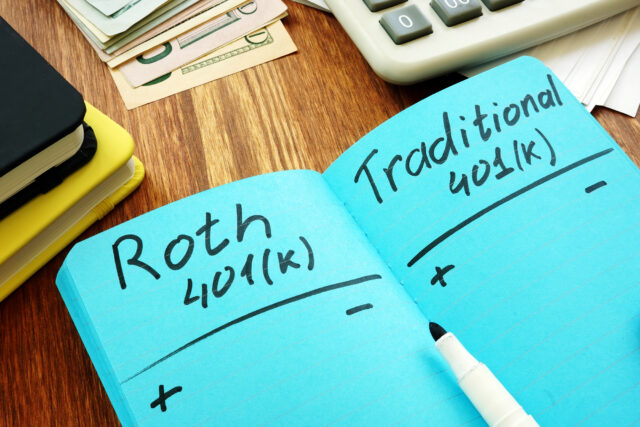
Your Retirement Plan May be Overhauled to Finance Tax Cuts
Alicia H. Munnell is a columnist for MarketWatch and senior advisor of the Center for Retirement Research at Boston College.
Shift to Roth accounts could pay for tax cuts – at least in the short run.
“Word has it” that the Congress will be looking for revenues to finance tax cuts and that one possibility would be to shift IRAs and 401(k) plans from the traditional form to a Roth. Contributions to a traditional 401(k) account are not included in the employee’s income and earnings are not currently taxed, while distributions at retirement are treated as taxable income. Contributions to a 401(k) Roth account are made out of the employee’s after-tax income, earnings are not taxable currently, and distributions generally are not taxable.
These provisions mean that with the traditional plans where the contributions are deductible, the Treasury takes an upfront hit but recoups the money when accumulations are withdrawn at retirement. With the Roth approach, the Treasury foregoes no revenues in the short run but sees no revenues from withdrawals at retirement. So switching from the traditional to Roth format would boost revenues in the near term and reduce them in the future. This switch would be very advantageous for budget purposes where the cost of a tax package is usually reported for a 10-year budget window.
At first, I thought such a proposal was fanciful, but the House Ways and Means Committee draft Tax Reform Act of 2014 contains just such provisions. In the case of IRAs, the proposed legislation would prohibit any new contributions to traditional IRAs; all new contributions would have to be made to a Roth.
The proposal for 401(k) plans is somewhat more complicated. Plans would be required to offer Roth accounts. Employees could contribute up to half the maximum annual elective deferral amount (in 2017, the standard limit is $18,000; with catch-up contributions for those 50 and older, it is $24,000) into a traditional account, but any contributions in excess of half of these limits ($9,000 and $12,000, respectively) would be required to go to a Roth account. Employees could choose to contribute up to the entire annual limit to a Roth account. Employer contributions would continue to go to traditional accounts.
The “considerations” mentioned in favor of the proposed shift from traditional to Roth accounts are that the shift “…would help Americans achieve greater retirement security by effectively increasing the amounts they have available at retirement. Many people saving in traditional 401(k) plans do not consider the taxes that will be due upon distribution, and assume that their entire account balance will be available to them upon retirement. In contrast, the entire balance in a Roth account is distributed free of tax, and is available for retirement needs.”
Three quick points on the “considerations.” First, the authors of the legislation assume that individuals will contribute the same dollar amount regardless of whether the contribution is tax deductible or not. That assumption may or may not be valid. Second, making the 401(k) landscape more complicated could have a dampening effect on contributions, so that people end up saving less. Finally, given that half the employee contribution could still go to a traditional plan and all of the employer’s contribution will be to a traditional plan, the taxability of accumulations at retirement will not be immediately obvious.
Most importantly, increasing saving simply cannot be the real motive for the proposed changes from traditional accounts to Roths. First, we simply do not know enough about how such a shift will affect retirement saving. Second, many better options exist if the Congress wants to focus on improving the retirement system – make auto-enrollment and auto-escalation of the default contribution rate in 401(k) plans mandatory and/or introduce auto-IRAs for those with no retirement plan at work.
The attraction of Roth IRAs and 401(k)s is that they reduce the up-front revenue loss associated with the deduction of employee contributions under the traditional vehicles. The 2014 tax bill estimates it would increase revenues by $159 billion ($14.8 billion for IRAs and $143.7 billion for 401(k)s) over a 10-year period. Of course, revenues will be commensurately lower beyond the 10-year period when withdrawals come out of accounts tax free.
This seems like a crazy way to make pension policy!







